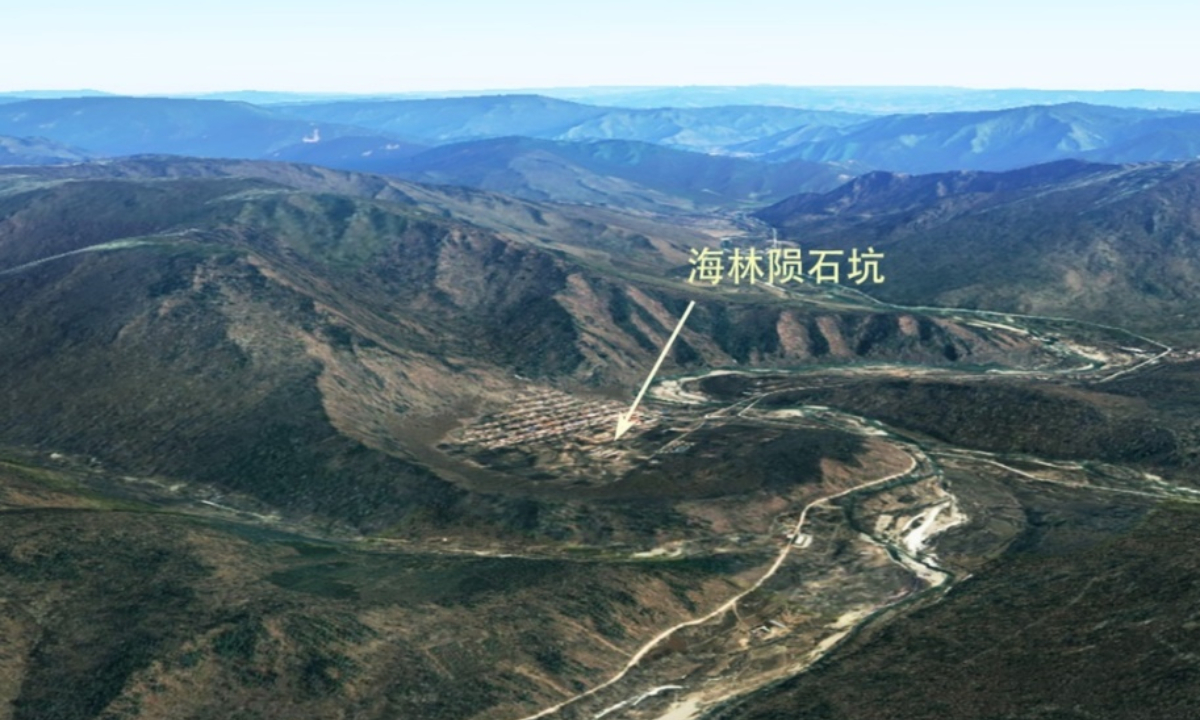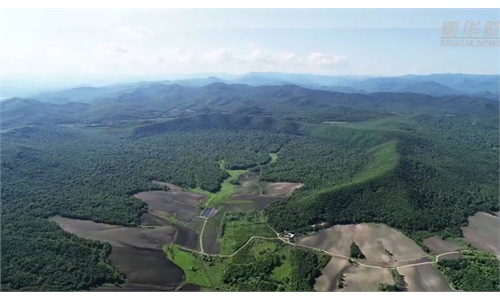Chinese scientists found for 1st time a 1,360-meter impact crater on a mountain ridge in NE China’s Heilongjiang

Hailin impact crater Photo: Xinhua
Chinese scientists found for the first time a meteorite crater on a mountain ridge, the discovery of which enriches human's understanding of the planetary collision history and provides a new perspective for exploring the crater formation mechanisms behind the unique terrain and landforms in China and researches on the impact or shock metamorphism of materials.
According to the Center for High Pressure Science & Technology Advanced Research (HPSTAR), the newly discovered Hailin impact crater, also the fourth confirmed impact crater discovered by Chinese scientists within China's territory to date, is located among the northern mountains of Hailin city in Northeast China's Heilongjiang Province, the Xinhua News Agency reported.
What is unique to this meteorite crater is that it was formed on the ridge of a mountain. It takes on an elliptical, dustpan-like shape with a diameter of up to 1,360 meters. The height difference between its highest rim and its lowest point exceeds 100 meters, as if a massive funnel suspended on the Zhangguangcai Range, a branch of the Changbai Mountains.
Hailin impact crater is a geological imprint left by a significant planetary collision event in China's geological history. According to Chen Ming, one of the researchers discovered the impact crater and a fellow researcher with HPSTAR, this impact occurred approximately hundreds of thousands of years ago.
"Through field geological surveys and geological sample testing, we have identified a series of macroscopic and microscopic geological evidence related to the impact in this 'small basin,' confirming that it is a geological structure formed by the impact of an extraterrestrial asteroid," Chen said, noting that except for some degree of erosion, the Hailin meteorite crater is generally well preserved.
The discovery has recently been published in the English-language journal Matter and Radiation at Extremes. Reviewers believe that the discovery enriches human's understanding of the planetary collision history and provides a new perspective for exploring the impact crater formation mechanisms behind the unique terrain and landforms in China and researches on the impact or shock metamorphism of materials.
Meteorite craters on Earth are circular depressions formed by the impact of celestial bodies, such as asteroids falling to Earth from space. Meteorites are not only a unique phenomenon of nature, but also one of the important bases for scientists to study outer space.
So far, over 200 impact craters have been identified and confirmed on Earth, such as the Barringer Meteor Crater in Arizona, the US, and the Wolfe Creek Crater in Australia. However, meteorite craters discovered within China's territory are extremely rare.
The Barringer Crater formed from the impact of an iron-nickel asteroid about 46 meters across is only 50,000 years old and remains unusually well preserved. The collision initially formed a crater over 1,200 meters across and 210 meters deep, but it is now only 150 meters deep due to subsequent erosion that has partially filled the crater, according to NASA.
Almost circular in shape, Wolfe Creek Crater is considered the second largest crater in the world which geologists have estimated formed some 300,000 years ago when a meteorite weighing more than 50,000 metric tons struck the Earth at an estimated 15 kilometers per second, NASA said.
Global Times

